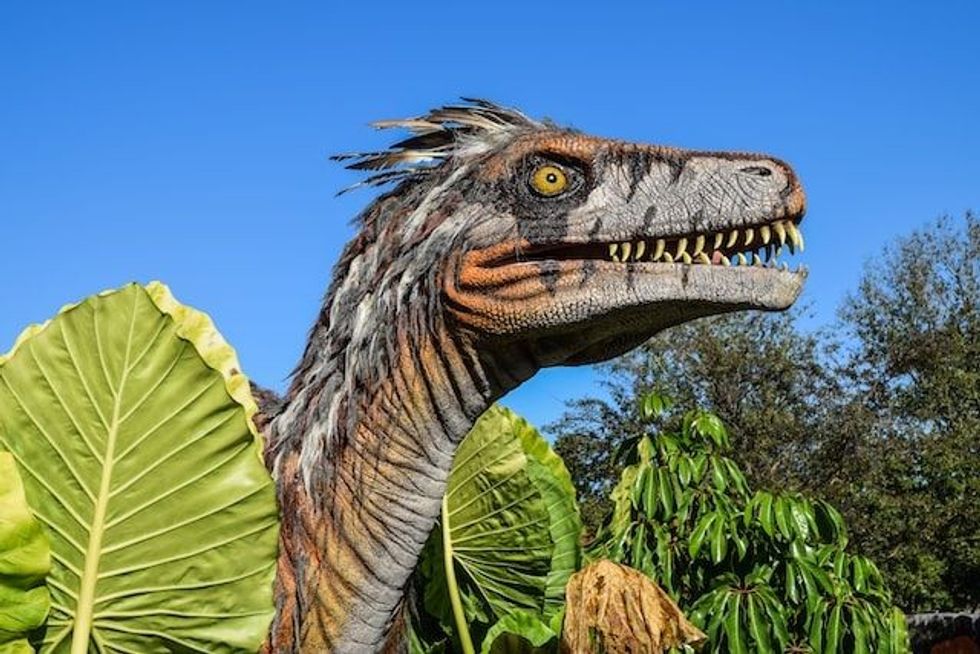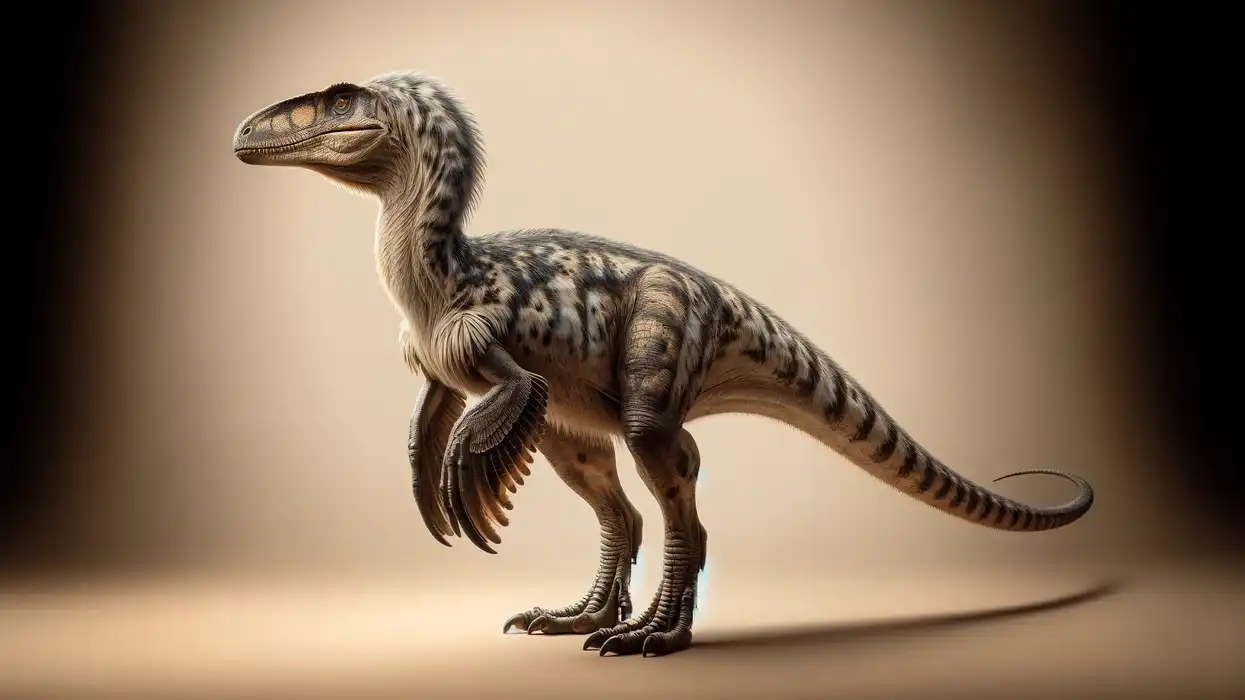Why flying dinosaur names?
Dinosaurs are still considered one of the most extraordinary creatures to have existed. They were the most fearsome predators on the earth about 100 million and further years ago. There is also an enormous variety of dinosaur species known to have existed.
The dinosaurs varied in size, habits, biological features, and natural habitats. Dinosaurs are not the ancestors of modern birds. In fact, scientific studies deny the existence of flying dinosaurs.
Most prehistoric animals capable of flight were flying reptiles. These flying reptiles, or 'pterosaurs', belonged to the scientific family known as Pterosauria. The first Pterosaur fossils were found in Bavaria, Germany, in 1784.
Besides the vast family of Pterosauria, many bird-like, feathered dinosaurs also existed. These two large groups of animals were not exactly dinosaurs. They were distant relatives with similar characteristics to dinosaurs.
Most bird-like dinosaurs had feathered wings, with few exceptions. The pterosaurs had membranous wings made of soft tissue. Many had underdeveloped wings or other body features, restricting their flying capability. Other pterosaurs and feather-winged dinosaurs could only glide, incapable of achieving powered flight.
You can learn a lot about these ancient flying creatures from this article. Reading these name lists might make you wonder about the age and rich history of the earth. The descriptions can help you understand how these creatures evolved through time.
Flying Dinosaur Bird Names
1. Archaeopteryx - a genus of feathered, bird-like flying dinosaurs. This late Jurassic period dinosaur is known by its German name, 'Urvogel'.
2. Changyuraptor - a genus of feathered, theropod dinosaurs. These dinosaurs had wings on their forelegs and hindlegs, making them capable of flying.
3. Epidexipteryx - a genus of small, bird-like dinosaurs with ornamental features. They had membranous wings for gliding across short distances instead of powered flight.
4. Microraptor - a genus of theropod dinosaurs with four feathered wings. It was a non-avian dinosaur.
5. Pelecanimimus - a genus of primitive theropod dinosaurs that shared vague similarities with an ostrich. Although their feathered wings were short, a large sternum and strong muscles hint at their flying ability.
6. Rahonavis - a genus of bird-like theropod dinosaurs. Although there are some contradictions regarding its ability to fly, its body features are more suitable for flight than the Archaeopteryx.
7. Scansoriopteryx - was discovered from a singular fossil in Liaoning, China. It was a genus of feathered dinosaurs incapable of powerful flight. However, the adults could climb trees and glide.
8. Sinornithosaurus - a genus of feathered theropod dinosaurs dating back to the early Cretaceous era. These were small or medium-sized dinosaurs that could glide from tall trees.
9. Yi qi - the only species from the Yi genus of dinosaurs. There is no evidence to support Yi qi being capable of flight. But its membranous wings imply that it could glide across short distances.
10. Xiaotingia - a genus of bird-like dinosaurs with ample feathers on its head, body, and limbs. They potentially could achieve powered flight due to long feathers on both limbs.
11. Yixianosaurus - a non-avian theropod dinosaur or medium size. The large feathers on its forelimbs indicated that it could fly short distances.
Small Flying Dinosaur Names
12. Anurognathus - a small flying reptile with a short tail from the later Jurassic period.
13. Bakonydraco - pterodactyl-like pterosaurs of medium size from the late Cretaceous period. They had a distinctive crest that started from the snout and extended to the back of the head.
14. Camposipterus - a group of pterosaurs native to England. They had some similar features to the flying reptiles in genus Pterodactylus.
15. Campylognathoides - a long-tailed pterosaur with a curved lower jaw.
16. Kepodactylus - a group of pterosaurs with characteristics similar to pterodactyls. These flying reptiles could be identified by their distinctive teeth.
17. Mesadactylus - a genus of small pterosaurs that lived during the later Jurassic period. These flying reptiles were fish eaters living in marine environments.
18. Ornithocheirus - a pterosaur genus from the mid-Cretaceous period. These flying reptiles were small-sized and had membranous wings.
19. Pterodactylus - the first pterosaur genus named and identified as a flying reptile. Only one species is specified within this group - Pterodactylus antiquus. The group is commonly known as 'pterodactyls'.
20. Pterorhynchus - the pterosaur had a long tail, but most of it was part of the vane. It also had a peculiar head crest.
21. Sinopterus - a genus of pterosaurs related to the family Tapejaridae. They had a beak similar to modern birds, were toothless, and had an extended crest.
22. Sordes - an ancient genus of pterosaurs with long tails covering half their length. They existed from the late Triassic to the late Jurassic periods.
23. Tapejara - a genus of small pterosaurs from the Cretaceous era, native to Brazil. They are distinguishable by the elongated, semicircular crest extending over the head.
24. Tupandactylus - these pterosaurs of the later Cretaceous period were distant relatives to the reptiles in the genus Pterodactylus. They had a large crest over the snout, made of bone and soft tissue.
25. Xericeps - a genus of toothless pterosaurs of the late Cretaceous era found in southeastern Morocco. They were medium-sized reptiles. The only known species is Xericeps curvirostris.
Funny Flying Dinosaur Names That Kids Will Love
26. Arthurdactylus - a pterodactyl-like pterosaur from the early Cretaceous period. The name is a tribute to Arthur Conan Doyle and his novel featuring pterosaurs, 'The Lost World'.
27. Bellubrunnus - these pterosaurs lived during the late Jurassic period in Europe. They were distant relatives of Rahmphorhycus, differentiated by their curved wingtips, fewer teeth, and invertebrate tail.
28. Dimorphodon - meaning 'two-form tooth', was a genus of flying reptiles from the early Jurassic period. They were medium-sized pterosaurs with the rare feature of having two different types of teeth.
29. Dsungaripterus - a genus of big pterosaurs from the Jurassic and Cretaceous periods. These prehistoric animals lived in marine environments of Asia and Africa.
30. Feilongus - a genus of pterodactyl-like pterosaurs of the early Cretaceous era. These reptiles could fly using their membranous wings and had distinctive teeth.
31. Germanodactylus - meaning 'German finger'. It is a pterosaur with vague features of a pterodactyl, found in Germany. It also has a distinctive head crest.
32. Haopterus - a genus of flying reptiles from the late Cretaceous period. Numerous fossils of Haopterus have been discovered in the Liaoning Province of China.
33. Mythunga - belongs to the group of the last surviving toothed pterosaurs. Their fossils date back to the early Cretaceous period.
34. Rhamphorhynchus - a genus of pterosaurs classified as long-tailed dinosaurs. These flying reptiles had a distinctive tail vane.
35. Tupuxuara - these pterosaurs were similar to the genus Pterodactylus, with crests, long, membranous wings, and short tails. However, these early Cretaceous flying reptiles were toothless and closer relatives to Thalassodromeus.
Largest Flying Dinosaur Names
36. Aerodraco - a genus of pterosaurs that shared vague similarities with pterodactyls, with only one known species, Aerodraco sedgiwikii. They were among the group of the last toothed pterosaurs.
37. Alanqa - a genus of later Cretaceous pterosaurs found in southeastern Morocco. Research about their wingspan suggests these were large flying reptiles.
38. Argentinadraco - a genus of azhdarchoid pterosaurs distinguished by the concave shape of their lower jaw, with ridges. They lived in Argentina during the late Cretaceous period.
39. Azhdarcho - a genus of azhdarchoid pterosaurs that lived during the later Cretaceous era.
40. Cimoliopterus - these pterosaurs thrived in England and North America. These are distinguished from other pterosaurs based on the crest on their snout and the ridges and spacing in their tooth sockets.
41. Coloborhyncus - a genus of toothed pterosaurs from the early Cretaceous period with some similarities to pterodactyls. They lived in the marine environments of Brazil and England.
42. Ferrodraco - these pterosaurs existed during the late Cretaceous era. They are also the final surviving toothed pterosaurs.
43. Ikrandraco - a genus of pterodactyl-like pterosaurs from the early Cretaceous period. These were medium and large-sized reptiles with a distinctive crest on their lower jaw.
44. Istiodactylus - a genus of the largest known pterosaurs in its family, Istiodactylidae.
45. Lonchodectes - a genus of pterosaurs from the late Cretaceous period. They had long, vertically- compressed jaws fitted with short teeth.
46. Moganopterus - this genus of pterosaurs had the largest skull among all its toothed kin. Its fossil was found in China.
47. Nicorhyncus - one of the last groups of toothed pterosaurs and distantly related to pterodactyls. Only two species lived during the Cretaceous period - Nicorhyncus capito and Nicorhyncus fluviferox.
48. Pteranodon - meaning 'wing without tooth'. It was one of the largest pterosaurs and one of the largest flying reptiles to have existed.
49. Quetzalcoatlus - a member of the genus of azhdarchoid pterosaurs. It was the largest known flying reptile. An unnamed azhdarchid found in Transylvania is estimated to be the largest pterosaur.
50. Thalassodromeus - a group of pterosaurs from the early Cretaceous period. These pterosaurs had one of the largest skulls among their kin.
51. Tropeognathus - a genus of pterosaurs with only one known species - Tropeognathus mesembrinus. They were the largest toothed pterosaurs.
52. Zhejiangopterus - belonged to a genus of azhdarchoid pterosaurs from China.
53. Zhenyuanopterus - a genus of large pterosaurs that were close relatives to pterodactyls. These were natives of Asia and lived during the early Cretaceous period.
You Might Also Like
Dinosaur Periods: The Mesozoic Era To The Jurassic Period, Details Revealed!
Fantastic Dinosaurs And Where To Find Them In London
Best Dinosaur Gifts For Kids And Teens By Age








